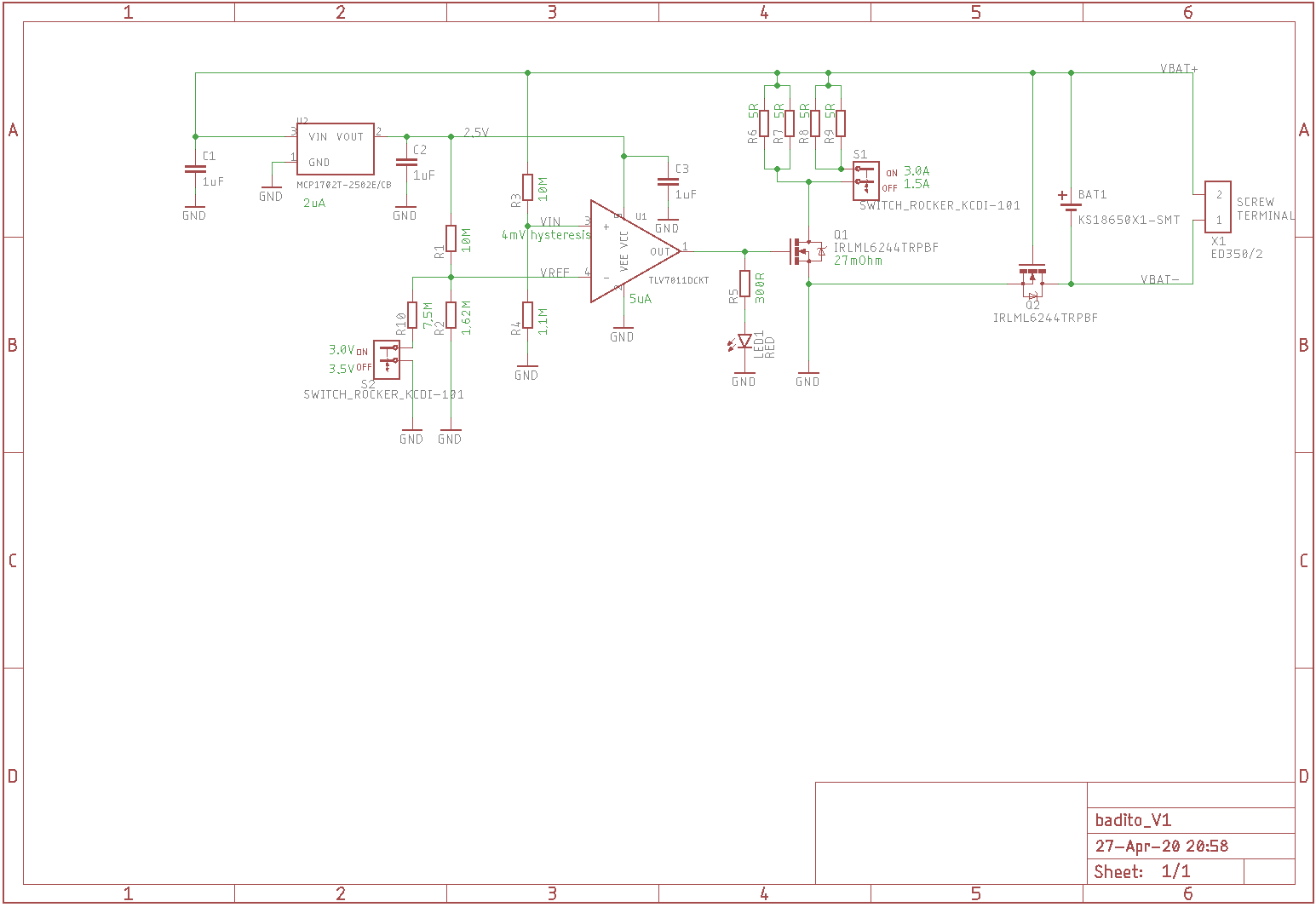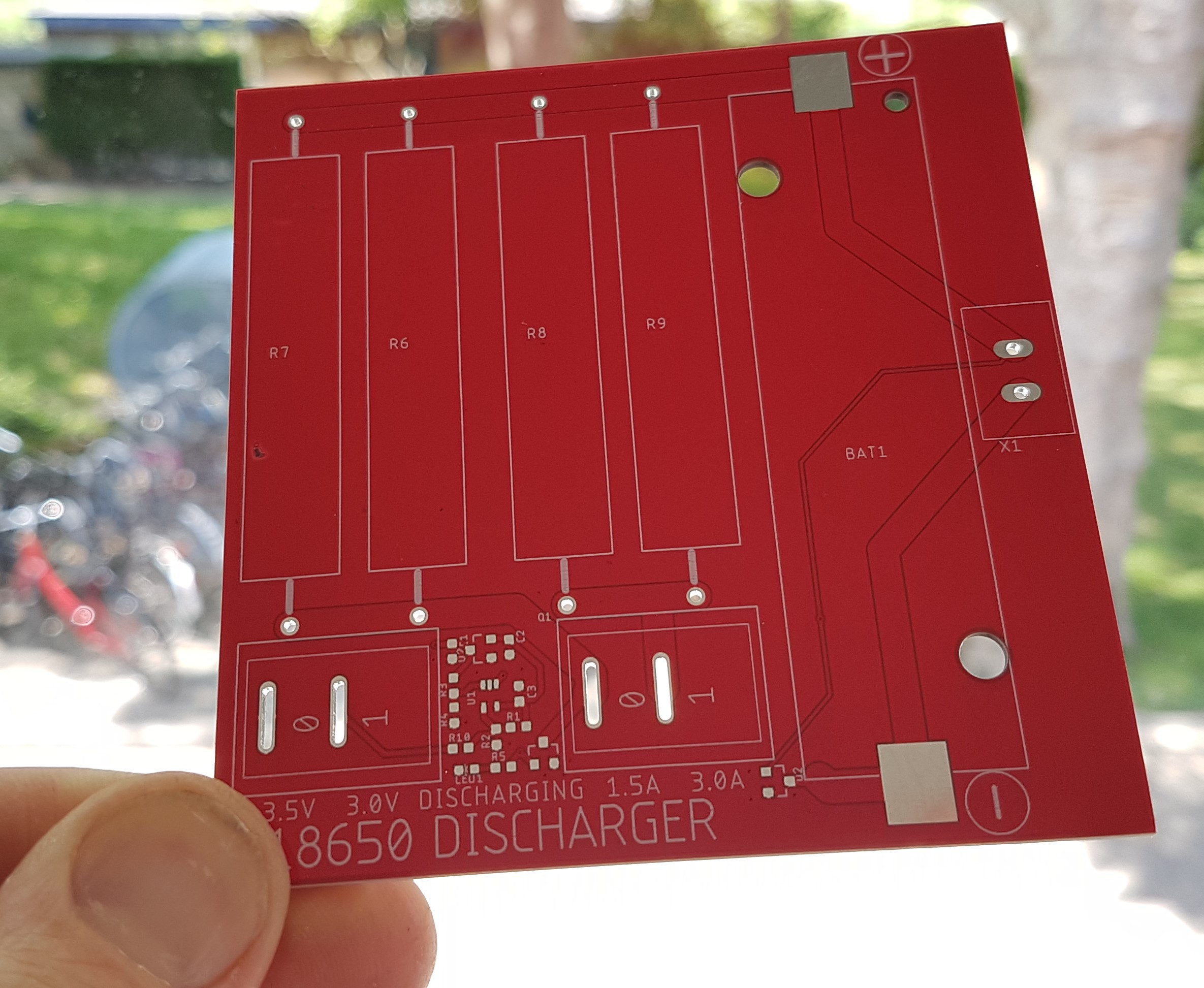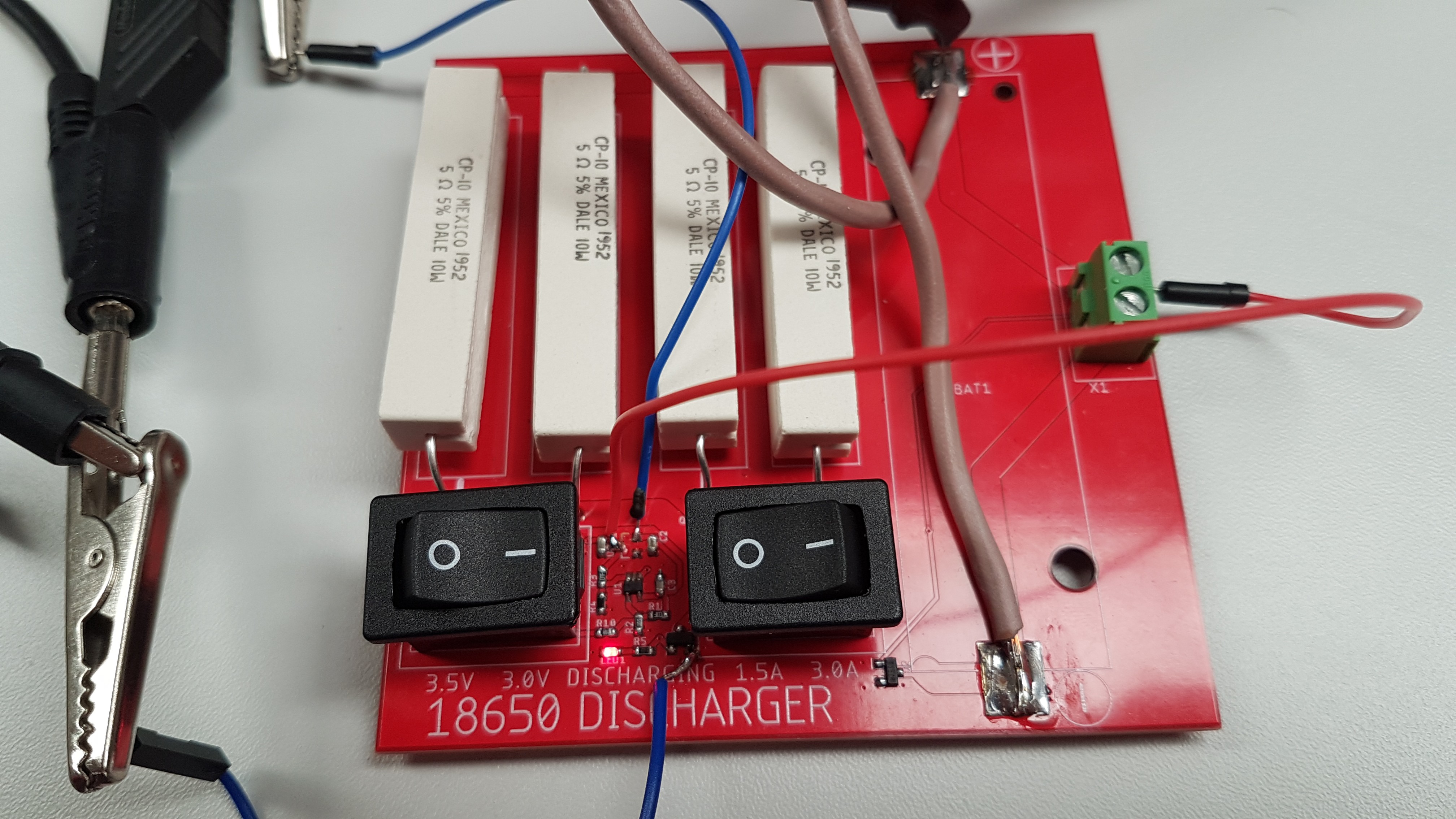I named the board BaDiTo after Battery Discharge tool. The first version of the board basically consist of power resistors, a mosfet and a comparator and a LED. Using one rocker switch you can choose between 1.5A load (2 resistors in parallel) or 3A load (4 resistors in parallel) which equals about 0.5C and 1C discharge current. The other rocker switch is to choose between two discharge voltages, 3.5V or 3.0V. The LED is on during discharging and it goes off when the dicharge voltage is reached. I have selected a low power comparator (TLV7011) and used a 2.5V LDO to make a stable reference votage. The PCB was just 4.90 USD and components about 2 USD.

When I received the boards I was happy. Elecrow did a great job.


When I tested the board it didn't work well. BaDiTo V1 FAILED. The discharge current was lower than expected and when connected to a oscilloscope I found oscillation. I realised I made a stupid mistake. The comparator should have been designed with a large hysteresis. When the voltage falls below the threshold, the load is removed, the voltage jumps back up and the load is re-enabled, then the voltage falls again and the load is removed, etc. in an endless loop, which is oscillation.
Then I remebered this board https://easyeda.com/Iam1CM69/18650-discharge-board designed by https://twitter.com/AstroTogger
 Jasper Sikken
Jasper Sikken
Discussions
Become a Hackaday.io Member
Create an account to leave a comment. Already have an account? Log In.